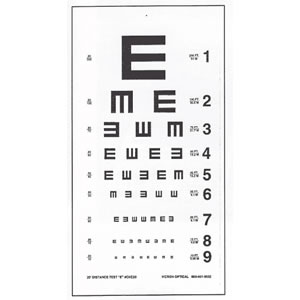Answer:
Professor Hermann Snellen - dutch professor of ophthalmology. He placed the "E" at the top of the eye chart in 1862. However, the "E" wasn't his first choice. Snellen began with the "A", but quickly changed his option. Of all the letters in the alphabet, "E" was chosen based on mathematical calculations. The 3 horizontal limbs of the fifth letter are separated by equal amounts of white space. There was a one-to-one ratio between the height and width of the letter.
Also, as Louanne Gould, of Cambridge Instruments, says that the "E" if different from more open letters like "L" or "U". "E" forces the observer to distinguish the intenseness between the black and white. That is an important consitituent of good vision.
This piece of information is not exactly useful in many situations, but it's fun to know.


Aucun commentaire:
Enregistrer un commentaire